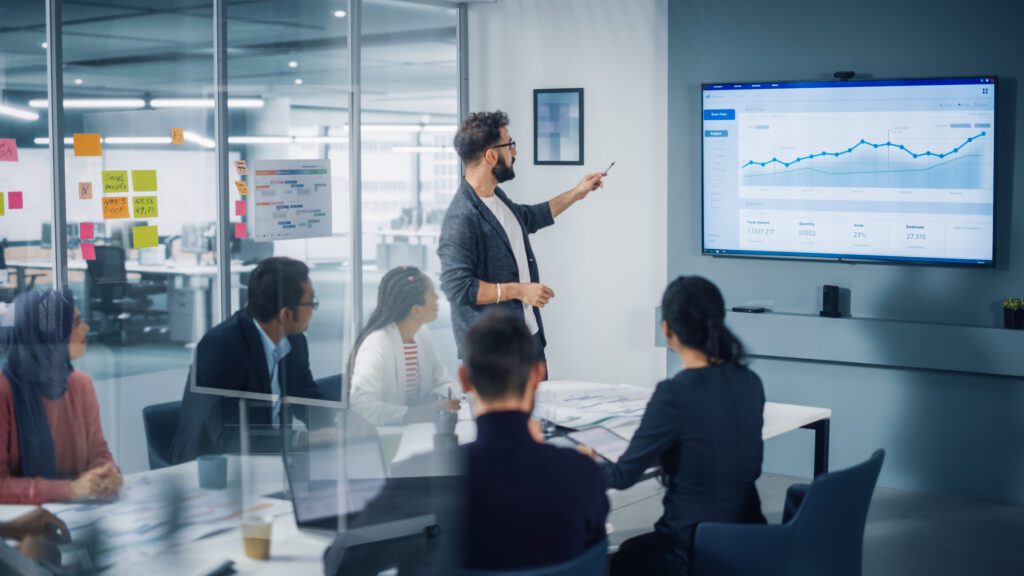5 Emerging Technology Trends That Can Benefit Local Government Agencies
Transformative technologies enable government organizations to tackle population health, public safety, and more challenges. But it isn’t only about future digital capabilities. It’s about putting the infrastructure in place now, to have the ability to replace legacy systems and adopt these transitional technologies when needed and available.
Local government agencies need a secure, reliable digital infrastructure to take advantage of current and future technologies like IoT, Web 3.0, AI, and others. This infrastructure will enable them to provide more efficient and effective public services while increasing public trust and transparency. Additionally, investing in a reliable digital infrastructure will allow these agencies to scale up and keep up with the fast-changing world quickly and will help local government agencies save time and resources while improving services for their citizens.
As connectivity expands, leaders can establish the foundation for future-ready organizations.
Here are five emerging technology trends and technologies that local government agencies will want to keep an eye on and consider the benefits of to their constituents and citizens.
1. IoT and Edge Devices
Low-power, low-latency connected devices are quickly becoming invaluable to federal, state, and local agencies. Indeed, “65% of U.S. federal executives report that they have significantly or exponentially increased their deployment of IoT and edge devices over the past three years,” according to Accenture. To take advantage of the following benefits, local institutions should assess existing infrastructure and take a purposeful approach to improvements.
Reduce Costs by Facilitating Predictive Maintenance
Large swaths of public infrastructure need to be updated, requiring frequent monitoring and repairs. Without connected systems, municipalities are stuck in a loop of reactivity, with few tools to enable a proactive approach. Modern monitoring capabilities let government organizations break this cycle.
Sensors help public works monitor critical systems, assets, and services, from fleet vehicles to HVAC systems. They can remind maintenance crews to perform regular upkeep and alert them when something goes awry. IoT can also collect information from bridges, parks, and roads. IoT-informed platforms can suggest preventative repairs and notify leaders of abnormalities in these cases.
Public agencies achieve substantial savings with wireless internet and remote monitoring tools. For example, Microsoft reported that “implementing predictive maintenance solutions has been shown to reduce equipment downtime by an average of 50%.”
Increase Public Trust by Ensuring the Availability of Citizen Services
Although public trust in local government remains much higher than in federal agencies, local and state organizations can do more to increase confidence. Sensor-informed data analytics allow officials to analyze many city planning and management factors. This information allows leaders to prepare for continued availability and reduce service stoppages and disruptions.
City leaders can use IoT to examine factors such as:
- Water supply
- Population growth
- Social services
- Zoning
- Food supply
- Land use
- Transportation patterns
- Mapping
Leaders can reach more community members earlier and faster when combined with digital communication services. Online tools can also increase community engagement by allowing citizens to report problems with public infrastructure seamlessly. Consequently, Deloitte found that “a citizen’s digital experience with a government agency was a strong predictor of their overall level of trust.”
2. Artificial Intelligence (AI)
The latest advancements in AI give local governments an edge. It solves traffic congestion, protects water and food supplies, and enhances public safety. More than 80% of federal government executives told Accenture “that their organization is dependent on AI technologies to function effectively.” Generally, AI works alongside other emerging technologies, from IoT to machine learning. Public officials can identify aspects to enhance by preparing strategic blueprints for government digital infrastructure improvements.
Improve Citizen Care and Communications
AI and natural language processing (NLP) technologies have several use cases in government. For instance, helpful chatbots can decrease customer friction by answering questions and routing them to the correct department. Moreover, AI-powered platforms turn collected data into actionable insights, allowing government officials to focus on the best methods for outreach, community initiatives, and more.
Artificial intelligence also improves processes, enabling municipalities to assist more people in less time. Microsoft reported that AI-enabled data analytics resulted in significant time savings for public works. In one case, a local government slashed the “time to issue commercial zoning permits from 12 months to just four months.” And StateTech highlighted how intelligent cameras in Wisconsin are taught to “recognize icicles and monitor their size.” The hardware sends an alert to public works, allowing them to remove the icicles and keep pedestrians safe.
Cost and Time Savings Through Automation
Intelligent automation uses several emerging AI technologies, including machine learning, computer vision, and natural language processing. Government organizations can achieve cross-cutting goals and high-level objectives — typically hindered by slow processes — by deploying hyper-automation tools. Indeed, Deloitte believes the U.S. government can save 1.3 billion hours using automation technologies.
Intelligent automation can:
- Integrate legacy systems that are incompatible with modern technologies
- Update government systems during and after citizen interactions with chatbots
- Extract structured and unstructured data for report generation
- Perform public sentiment analysis to understand community needs better
3. Decision Intelligence
Smart technologies improve decision-making at the federal, state, and local levels. It leverages AI, data analytics, and machine learning to produce insights, allowing officials to make quicker, better decisions. Fast, reliable networking and IT solutions for your critical and security-sensitive data, designed to eliminate roadblocks that can slow your business, serve as the core foundation for immediate, secure data access.
Decision intelligence has many promising use cases, which is why Gartner expects the majority of government AI and data analytics investments to focus on enhancing “real-time operational decisions and outcomes” by 2024.
Develop Targeted Constituent Services
State and local officials use decision intelligence technologies to quickly collect and analyze vast amounts of data. It enables leaders to identify specific populations’ key challenges, develop predictive risk factors, and proactively address problems. Likewise, data collection helps municipalities select high-impact capital projects for community improvements.
4. Blockchain and Web3
Blockchain technologies and token-based ecosystems are just two emerging tools used in a decentralized system called Web3. Blockchain can automate labor-intensive workflows and strengthen data security. Government Computer News (GCN) believes using Web3 and blockchain will increase “efficiency and accountability for local governments and municipalities.”
Increase Transparency, Accessibility, and Security
Blockchain helps government agencies record information and store transactions. Doing so decreases administration workloads and fraud while making documents accessible to the public. A National League of Cities report said, “Blockchain will empower cities to innovate how they work with local businesses and invest in and improve efficiencies across many areas, such as transportation, energy, and voting.”
These benefits can be realized across many use cases, including:
- Contract creation and execution
- Proof of ownership requests
- Land transactions
- Social benefit record management
- Citizen document verification
However, McKinsey & Company said blockchain’s “success hinges on applying it to a specific problem and identifying appropriate use cases.” Smaller governments should focus on developing the foundational technologies required to take advantage of blockchain and Web3 when use cases emerge.
5. Digital Twins
A digital twin is a virtual copy of a physical environment, process, system, or physical aspect. It acts identically to its real-world “twin.” Government agencies use real-time models to deploy emergency teams, whereas simulated models aid with planning scenarios. Like other emerging technologies, digital twins rely on IoT connectivity through high-speed networks, routers, and other devices. These virtual models also use AI and ML tools.
Enhance Emergency Response
Digital twins help engineers, planners, and public works crews quickly develop and respond to emergencies. It can detect issues in high-security facilities or with power grids and provide the information in real-time, allowing officials to act on impending failures or threats. City planners and engineers also use digital twins for storm surge modeling and active-shooter scenarios. In these cases, the digital twin simulates the impact so leaders can assess and optimize response planning.


![Top 5 Reasons To Review Your Business ISP [Infographic]](https://www.coxblue.com/wp-content/uploads/2013/10/isp_review.jpg)
